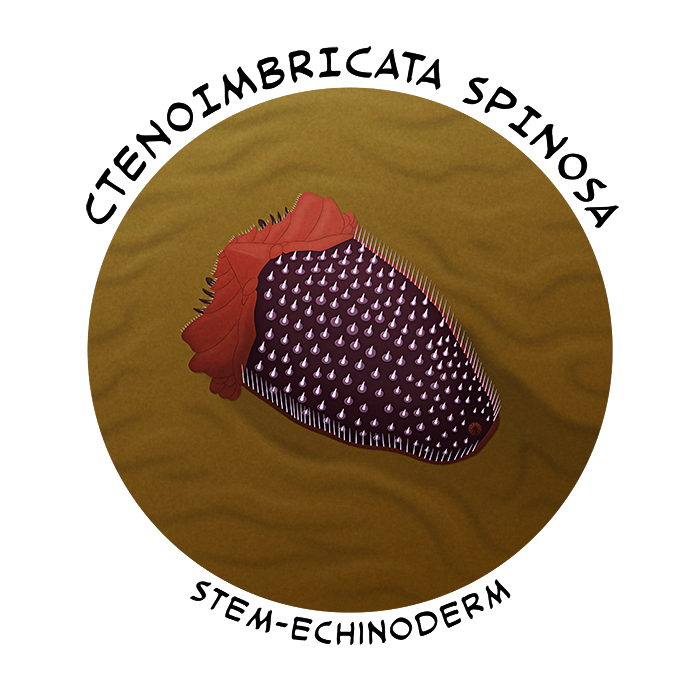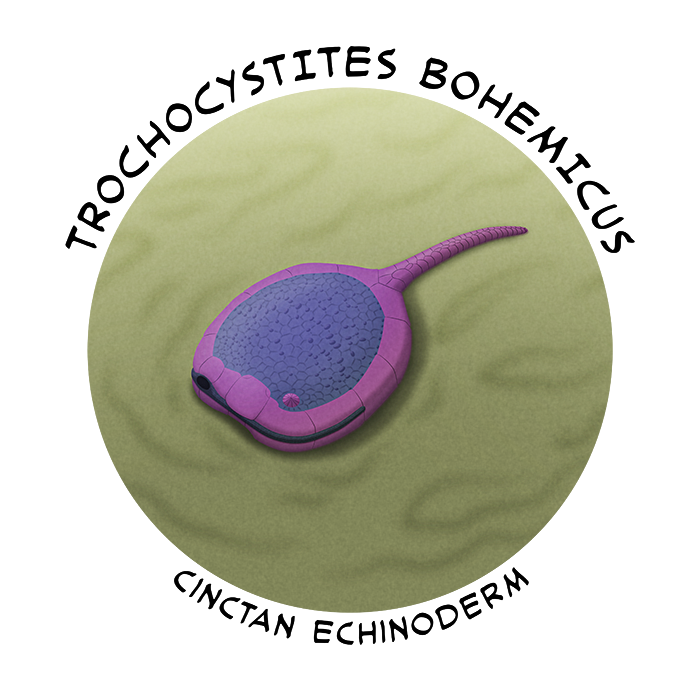Modern echinoderms typically have five-way radial symmetry as adults, and don’t at all resemble other deuterostomes – but their larvae give away their ancestry, still retaining bilateral traits and only developing radial symmetry when they mature and metamorphose.
The earliest definite echinoderms are known from the early Cambrian, about 525 million years ago, which seems to be around the point when early members of the group first developed biomineralized skeletons and became much more likely to fossilize. However, they must have an evolutionary history going back further than that, and molecular clock estimates suggest their last common ancestry with their closest relatives the hemichordates was in the Ediacaran about 570 million years ago.
For a long time the transition from bilateral to radial symmetry was a mystery, but various fossil discoveries are starting to reveal how this unique group of animals evolved.

Ctenoimbricata spinosa seems to be part of a stem lineage similar in appearance to what some of the earliest true echinoderms would have looked like. Discovered in northern Spain and dating to about 510 million years ago, it was a tiny 2cm long (0.8″) bilaterally-symmetric animal with a flattened plated body covered in spines.
It was probably a pharyngeal basket feeder, pulling in water and sediment through the wide mouth opening at the front of its body, straining it all through its internal gills to filter out food particles, and then spitting the rest back out again.

A group called cinctans probably represent the next branch in echinoderm evolution, showing some mild asymmetry in their racket-shaped bodies.
Trochocystites bohemicus here lived about 505 million years ago in Czechia. Just 3cm long, its mouth was located on the right side of the front of its body and it had a stiff arm-like appendage at its rear end that probably helped to stabilize it on the sea floor.
It was probably a stationary filter-feeder with a lifestyle similar to some modern tunicates, pumping water in through its mouth, over its gills, and out through an extra hole in the middle of its front end that was covered by a moveable plate.
